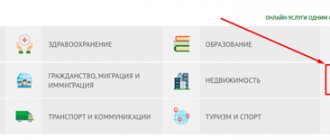How cadastral value and land tax are related: basic formula
The cadastral value of a land plot (hereinafter referred to as the CV) must reflect its real market value. It participates in the formula for calculating land tax (hereinafter - ZN):
ZN = KS × CH,
where CH is the land tax rate.
This formula is valid for the situation when:
- information about the KS is reflected in the state register before the start of the reporting period (the KS is included in the calculation as of January 1 of the reporting year);
- the KS indicator did not change during the accounting year.
See the Ministry of Finance's plans for land benefits here .
Find out what formulas you need to use if the CS has changed in the following sections.
Correction of errors in cadastral value
From January 1, 2021, less time is given to correct errors in the cadastral value.
Now you can submit an application only within 5 years, as changes were made to the Unified State Register. Previously, it was possible to apply for correction of technical and methodological errors until the cadastral value was recognized as current.
Read in the berator “Practical Encyclopedia of an Accountant”
Cadastral value as a tax base for property tax
Formula 1 for tax recalculation
Formula 1 for recalculating land tax looks like this:
ZN = KSizm × CH,
where KSizm is the revised cadastral value.
This formula is used if the reasons for changing the Constitutional Code are (clause 1 of Article 391 of the Tax Code of the Russian Federation):
- Incorrect value of KS - after the error is eliminated, recalculation of land tax when the cadastral value changes occurs for the entire period from the moment its incorrect value was used in tax calculations.
- Revision of the Constitutional Code by a court decision or a decision of the commission for the consideration of disputes on changes to the Constitutional Code - recalculation of land tax is carried out for the period in which an application for revision of the Constitutional Code was submitted (but not earlier than the period when the disputed Constitutional Code was entered into the state register).
Find out what register owners of cash register equipment should know about from the publications:
- “Which online cash registers are included in the Federal Tax Service register?”;
- “State register of cash register equipment - what does it include and where to find it?”.
Formula 1 is supplemented and expanded for other reasons for adjusting the CS (for more details, see below).
Sequence of cadastral valuation
From January 1, 2021, the order of cadastral valuation has changed.
Now it is carried out 4 years after the last revaluation. In Moscow, St. Petersburg and Sevastopol, this period can be reduced by 2 times.
True, taking into account the old rules, a transition period has been established. Therefore, back in 2022, the regions will conduct an assessment of land plots without taking into account restrictions on its frequency, and in 2023 it will be carried out in relation to buildings, premises, structures, parking spaces, and unfinished construction projects.
Information on cadastral value that is entered into the Unified State Register must be applied from 2021:
- from January 1 of the year following the year when the act on the results of the revaluation came into force;
- from January 1 of the year following the year of entry into force of the act on increasing the cadastral value of the property;
- from the date of application of information on the cadastral value, changed due to a technical error in the Unified State Register or making amendments to reduce the value.
Read in the berator “Practical Encyclopedia of an Accountant”
How is the object of taxation determined?
Formula 2 for calculating land tax when cadastral value changes
Formula 2 is applied in situations where the CS is revised due to:
- changed type of permitted use of the site;
- transferring it to another category;
- changes in area.
The adjusted KS is involved in the calculation of land tax from the day the information is entered into the Unified State Register of Real Estate.
Information about the CS can be entered into the register at any date within the reporting year. In addition, after a change in the value of the CS, the tax rate may also change. In this regard, when calculating tax, the following must be taken into account:
- period of ownership of a plot with a changed KS in the reporting year;
- change in tax rate.
Formula 2:
ZN = (CH0 × KS × KM/12) + (CH1 × KSism × (12 – KM)/ 12),
Where:
CH0 and CH1 - tax rates before and after the change in the KS (if the rate has not changed, for example, with an increase in the area of the plot: CH0 = CH1);
12 - number of months of the reporting year.
Example
KS at the beginning of the year was 4,913,000 rubles. In March 2021, due to the transfer of land from the category of agricultural land (CH0 = 0.3%) to the category of plots intended for summer cottage construction (CH1 = 0.025%), changes were made to the register, and the KS began to amount to 6,400,000 rubles.
Calculation of land tax when cadastral value changes:
ZN = (0.3% × RUB 4,913,000 × 3 / 12) + (0.025% × RUB 6,400,000 × (12 – 3) / 12) = RUB 4,885
To change the notification form for payment of property taxes for individuals, see the link.
Changes in the cadastral value of land plots
The cadastral price is formed based on the rate established by the state for a certain municipal area and category of land. The rate is multiplied by the area of a specific plot and as a result the price of the land is calculated.
The cadastral value is formed in accordance with the procedure established by the provisions of Law No. 135-FZ of 1998, Government Decree No. 945 of 1999, and No. 316 of 2000.
The cadastral value was identified for all Russian lands in 2005 for the purpose of subsequent calculation of land tax. However, according to Law No. 135-FZ of 1998, cadastral valuation can be additionally carried out every five years by order of the government authority.
Also, the cadastral value can be re-determined for:
- Areas that are newly taken into account (for example, due to merger or division).
- Previously registered lands.
- Plots whose characteristics have changed, resulting in a recalculation of the cadastral value (for example, land area).
- And finally, the established cadastral value can be appealed if it affects the rights of land owners, users or other interested parties.
Thus, the cadastral value can be changed:
- At least once every five years by decision of the government authority.
- Anytime, based on changes in the unique characteristics of the site and subsequent amendments to the Civil Code.
- At any time, based on the results of an appeal of the cadastral value in Rosreestr or in court.
Here we will look at the procedure for changing the cadastral value of land on the initiative of its owner or the owner who believes that the assessment of the site was carried out incorrectly.
The reasons for appealing the cadastral value are:
- The presence of unreliable data used in establishing the cadastral price.
- Determination of the market price of land at the time when its cadastral value was established.
You can appeal the cadastral value in the Dispute Resolution Commission or in court. Citizens, unlike organizations, do not have to contact the commission first, but can go straight to court. Organizations need to follow the preliminary procedure for consideration of a controversial issue by a commission.
Information on the procedure and features of determining the cadastral value of a specific plot can be found in Rosreestr. It must be provided to the applicant within a week from the receipt of the request.
The commission is formed under Rosreestr in each individual subject and operates permanently. You can contact the commission at any time, regardless of how many years ago the cadastral value was determined.
The commission must provide:
- A statement indicating the reasons why the cadastral value needs to be changed.
- A certificate of the cadastral value of the plot (it can be obtained free of charge from Rosreestr).
- A document confirming the right to a plot if the application is submitted by its owner or possessor. This copy must be certified by a notary.
- Papers justifying the unreliability of cadastral value assessment data.
- Report (in paper and electronic form) on the assessment of market value.
- Expert opinion on the above report prepared by members of the SRO appraisers. This document is submitted in paper and electronic form.
An application may be refused if the entire package of documents is missing, or if deadlines are missed, or if the amount of the cadastral value has already been determined at the market value.
The decision to change the value of land is made no longer than 30 days from the date of application to the commission. The applicant may attend the committee meeting. He will receive a decision within 5 days after the meeting.
The decision can be made:
- On the revision of the cadastral price of land.
- About refusal.
Once, following a positive decision, the cadastral value of the site is changed, in accordance with the provisions of Law No. 135-FZ of 1998, information about the new value will begin to apply from January 1 of the year in which the application was submitted.
If the commission refuses to review the cost, you can try to resolve the dispute in court.
You must provide the court with:
- Or a claim to appeal the results of the cadastral value assessment (if you did not apply to the commission).
- Or a claim to appeal the decision of the commission at Rosreestr, which refused to change the cadastral value (if you applied to the commission). Rosreestr must be indicated as the defendant, and the commission as a third party.
After the decision you are satisfied with comes into force, it will need to be sent to Rosreestr and on this basis the cadastral value of the land will be changed.
You can clarify the procedure and features of determining and appealing the cadastral value from our specialists. You can also use the services of our lawyers to provide support in Rosreestr, court or other structures and to resolve complex problems.
Contacting an independent company
Revaluation of the cadastral value of real estate in Moscow is carried out by independent appraisers - specialized companies that are members of the SRO. It is important to choose an appraiser wisely, because the decision made by the commission or court will depend on this. Revaluation of cadastral value in Moscow is possible with Atlant Appraisal. The company provides a full range of services for assessment and revaluation of cadastral value. Atlant Assessment also provides. Clients do not need to apply to the commission or court on their own; the company will completely take care of these efforts.
How much does revaluation of cadastral value cost? A lot depends on the property here. Accurate information can be obtained by calling the numbers listed on the website.
Changes in cadastral value for land tax are applied retroactively
The Ministry of Finance of Russia reported how to act in the event of a decrease in cadastral value when calculating land tax for the current and past periods.
Land tax
Organizations paying land tax independently determine the tax base based on the cadastral value of land plots (belonging to them by right of ownership or right of perpetual use) as of January 1 of each year (tax period) based on information from the state real estate cadastre (clause 1 , 3 Article 391 of the Tax Code of the Russian Federation).
To establish the cadastral value of land plots, a state cadastral valuation of land is carried out, the results of which are approved by the executive authorities of the constituent entities of the Russian Federation (Article 66 of the Land Code of the Russian Federation). Such normative legal acts (RLA) of the executive authorities of the constituent entities of the Russian Federation, in order to determine the tax base for land tax, act in time in the order determined by Article 5 of the Tax Code of the Russian Federation (Resolution of the Constitutional Court of the Russian Federation dated July 2, 2013 No. 17-P, letter of the Ministry of Finance of Russia dated July 21, 2016 No. 03-05-04-02/42811). Namely:
- Legal regulations come into force after one month from the date of their official publication and not earlier than the 1st day of the next tax period for land tax - calendar year;
- Legal acts that improve the situation of taxpayers may have retroactive effect if they expressly provide for this.
Consequently, if a legal regulation on approval of the cadastral value of land was issued in connection with the elimination of an identified error (for example, the cadastral value of land is unreasonably inflated), the new cadastral value for the purpose of determining the tax base for land tax can be applied for past tax periods.
In this case, the taxpayer has the right to recalculate the land tax (downwards) and submit updated declarations for those years when the incorrect (inflated) cadastral value of the land was used to calculate the tax base (clause 1 of Article 54, clause 1 of Article 81 of the Tax Code RF).
Example
. Determination of the tax base for land tax.
The cadastral value of the land plot as of January 1, 2015, according to the initial (erroneous) assessment, was 500,000 rubles. After reviewing the erroneous results of determining the cadastral value, on March 1, 2016, a legal regulation was issued by the executive body of the constituent entity of the Russian Federation, establishing the cadastral value of the land plot in the amount of 400,000 rubles.
The tax base for land tax, determined as of 01/01/2015 and 01/01/2016, will be 400,000 rubles.
Accounting
If an organization recalculates (reduces) the land tax in accordance with the new cadastral value of the site and submits updated declarations for previous years, then the change in the previously accrued amounts of land tax will not constitute a correction of an error in accounting. This is due to the fact that inaccuracies or omissions in the reflection of facts of economic activity in accounting or in the financial statements of an organization, identified as a result of obtaining new information that was not available to the organization at the time of reflection (non-reflection) of such facts of economic activity are not recognized as errors (p 2 PBU 22/2010 “Correcting errors in accounting and reporting”, approved by order of the Ministry of Finance of Russia dated June 28, 2010 No. 63n).
Therefore, the amount of land tax reduction can be included in other income as profit from previous years identified in the reporting period (clause 7 of PBU 9/99 “Organizational Income”, approved by Order of the Ministry of Finance of Russia dated May 6, 1999 No. 32n). After recalculation and submission of the updated declaration, the accountant will make the following entry:
DEBIT 68 subaccount “Calculations for land tax” CREDIT 91 subaccount 91-1
— reflects the difference between the amounts of land tax based on the erroneous and corrected cadastral value of the plot.
Corporate income tax
The amount of land tax is taken into account as part of other expenses associated with production and sales on the date of accrual (subclause 1, clause 1, article 264, subclause 1, clause 7, article 272 of the Tax Code of the Russian Federation). As a result of an erroneous calculation of land tax (based on a higher cadastral value), the tax base for income tax and the amount of income tax were underestimated.
However, a decrease in the cadastral value of a plot as a result of actions of the executive authority of a constituent entity of the Russian Federation is not a mistake of the organization. Therefore, an organization can include the amount of land tax reduction for profit tax purposes in non-operating income of the current reporting (tax) period (clause 10 of Article 250, subclause 6 of clause 4 of Article 271 of the Tax Code of the Russian Federation).
Previously, this approach could lead to a dispute with the tax inspectorate, although if the taxpayer went to court, the chances of winning were extremely high for the taxpayer. Indeed, back in 2012, the Presidium of the Supreme Arbitration Court of the Russian Federation, in its resolution dated January 17, 2012 No. 10077/11 in case No. A11-4707/2010, indicated that the calculation of land tax, taken into account as part of expenses, in an excessive amount cannot be qualified as an error in calculating the tax on profit.
After this, clarifications from the regulatory authorities were issued taking into account the point of view of the Presidium of the Supreme Arbitration Court of the Russian Federation (letter of the Ministry of Finance of Russia dated January 23, 2014 No. 03-03-10/2274, sent by letter of the Federal Tax Service of Russia dated February 12, 2014 No. GD-4-3 / [email protected] ).
And in 2021, this position was supported by the Supreme Court of the Russian Federation (ruling dated November 8, 2016 No. 308-KG16-8442 in case No. A25-269/2015). The court noted: accounting for the originally calculated amount of tax as expenses cannot be qualified as erroneous. A tax adjustment in subsequent years should be considered as a new circumstance, indicating the need to take into account the over-calculated amount of tax during the period of said adjustment as part of non-operating income, the list of which, by virtue of Article 250 of the Tax Code of the Russian Federation, is not exhaustive.







